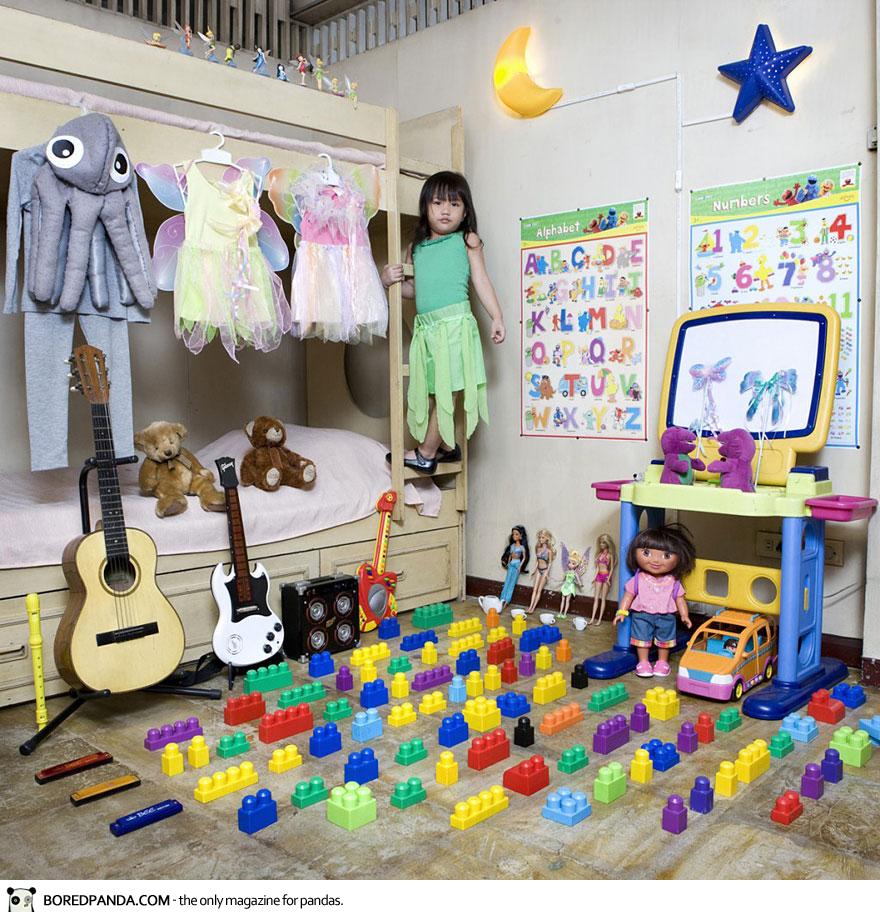
Image Credit: Boredpanda.com
I’ve been seeing a growing trend on the internet for the past year or so: sites like Buzzfeed and Bored Panda advertising series like Gabriele Galimberte’s Toy Stories a.k.a. “Children from Around the World with Their Favorite Toys,” or, another popular one, “Families from around the World with a Month’s Worth of Food.” What is the source of our cultural compulsion to view these massive collections of human possessions? Moreover, why do we like to see all of the peoples of every nation juxtaposed alongside one another? Visual Rhetoric is not only the study of individual signs, images, and symbols, but also of the messages that images impart as a collective. In the era of the internet list and the online photo gallery, images are often presented in groups to form a broader thesis. So what exactly is the thesis behind these “People from around the World Holding X” or “Doing Y”?
In looking at these catalogues of humanity writ large, I’m reminded of an exhibit which made its debut long before the era of viral internet photo collections: Edward Steichen’s The Family of Man.
Steichen’s The Family of Man is a staggeringly huge, ambitious collection. He curated the exhibition for the New York MoMA in 1955, and it contained 503 photographs taken by 273 photographers from 68 countries. It includes lesser known photographers as well as internationally renowned and acclaimed ones like Robert Capa, Henri Cartier Bresson, and Dorothea Lange.
The exhibition posits that all humans are unified by 26 common themes, most of which are treated as biological, and are poised towards illustrating a unifying natural order: birth, love, work, fear, joy, and death. The printed book version (which highlights a sliver of the original 503 photos) is filled with aphorisms from around the world filled with gnomic truths drawn from sources like the Bhagavad-Gita, the mystic poet Kabir, the Sioux tribe, and so on.
As Roland Barthes’ points out, in his essay “The Great Family of Man” from his collection of essays, Mythologies, these categories (birth, work, love, death, etc.), delivered as natural and universal, without any context, create an essentialist view of humanity which obscures historical realities. This, he says, is the myth of an anti-progressive humanism. “This myth of the human ‘condition’ rests on a very old mystification, which always consists in placing Nature at the Bottom of history,” he writes. Labor, of course, is a part and parcel of history, and to confuse the colonial and Western worker, is to erase that history. He suggests, “let us also ask the North African workers of the Gouette d’Or district in Paris what they think of the Great Family of Man.” Just as The Family of Man blankets over these uncomfortable truths, I wonder if these modern portraits are doing the same, or if they are struggling to respond to a problematic essentialism.
Considering Barthes’ critique, the question remains: what is the thesis of these modern lists of humanity? Is showing toys of children all around the world highlighting disparity, or reinforcing the status quo? Moreover, is there an inherent inability for a photo to show context, what Barthes refers to as the fundamental “failure of photography”?
Another question unaddressed by Barthes in his short essay, but which seems especially worth asking in these images of children with their toys is: What about the fact that possessions in different cultures may serve different functions and hold different meanings?
In my next post, I’ll continue to examine these viral photo lists which try to offer a holistic picture of people from around the world.

Recent comments
2 years 29 weeks ago
2 years 44 weeks ago
2 years 44 weeks ago
2 years 50 weeks ago
3 years 4 weeks ago
3 years 4 weeks ago
3 years 4 weeks ago
3 years 6 weeks ago
3 years 6 weeks ago
3 years 6 weeks ago